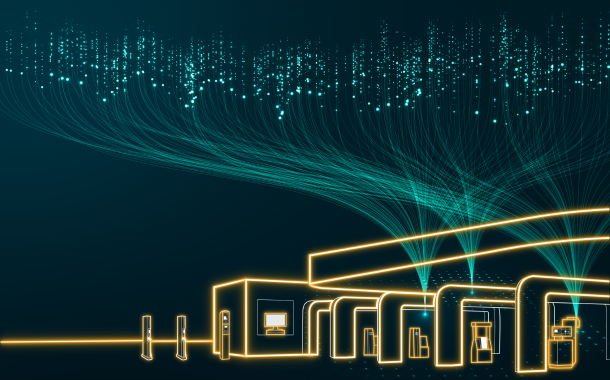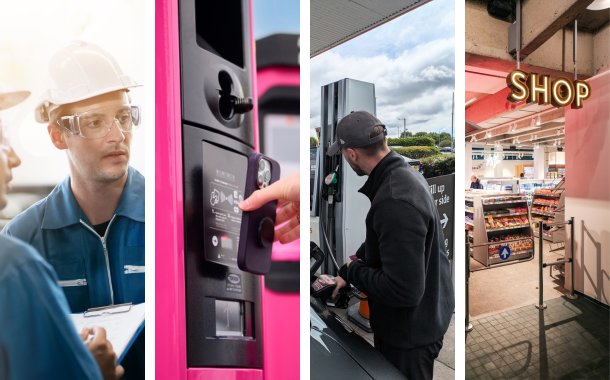SMART Mobility – How to Build the Fuel Station of the Future
November 18, 2025
Challenges such as rising costs, inefficiencies, and customer expectations demand smarter, connected solutions in the fuel retail and convenience industry – this is where the SMART Mobility Hub comes into play.
Today, many fuel site assets are already connected but there are different levels of connectivity and digitalisation sophistication. These different levels can be limiting for retailers when reviewing and designing their consumer experience proposition.
Data is the key to understanding. Retailers must ensure their assets are connected and enabled for digitalisation (at the right level) so they can gain a better understanding of the customer journey at their fuel station. In turn, these rich data insights will help drive improvements to the consumer experience by ensuring consistent delivery, customer satisfaction, and long-term business success, as well as enabling promotional and loyalty opportunities through digitalisation.
What are some of the key considerations for retailers, if they were to build a SMART Mobility Hub from scratch or make their existing fuel station, a smarter one?

What is a SMART Mobility Hub?
Simply put, a SMART Mobility hub is the fuel station of the future. It’s encompassing, sophisticated, digitally connected sites which cater to a whole host of consumer wants and needs. Transitioning to a SMART Mobility hub, or creating one from scratch, is the process in which a traditional fuel station is transformed into a multi-functional “hub” that offers a range of services that go beyond just “fuel”. These hubs are intended to optimise the customer experience, increase foot traffic, and capitalise on the evolving mobility landscape.
Why Invest in a SMART Mobility Hub?
Fuel stations are no longer, or at least shouldn’t be, focused on purely fuelling and servicing vehicles. To survive, stations need to evolve, and transitioning to a SMART Mobility hub is one way of doing just that.
Savings
With the right investment, in connected products and solutions, retailers can optimise costs and efficiencies with:
- Predictive analytics – reduce fuel wastage and energy use.
- Dynamic pricing – remain competitive.
- Data driven insights – enhance the customer experience on site (e.g. loyalty, optimal fuel times etc.)
- Streamlining inventory – invest in the right products at the right time, that suits customer needs.
- Time management – reduce labour and the requirement for staff to be on site.
- Proactive maintenance – reduce downtime on site, to ensure customer experience is not affected.
Maintenance and Measurable
With a SMART Mobility hub, every decision made by a fuel retailer would be backed by real-time insights to ensure a seamless operation.
Measurable
Data analytics would be used to personalise offers and loyalty programs, enhancing the customer experience. This could involve providing offers unique to customers buying habits, and/or advertising products at certain times of the day to increase on-site, impulse purchases.
Real-time insights would be used to accurately measure and regularly monitor fuel levels, enabling retailers to check inventory remotely, effectively schedule new fuel deliveries, and plan for busy periods to ensure they can keep up with customer demand; as well as proactively reduce the risk of leaks.
Maintenance
Remote diagnostics & management would allow retailers to gather enhanced data while also having the capability to carry out remote monitoring, management, diagnostics, and troubleshooting across the entire forecourt. This would result in decreased maintenance costs to boost efficiencies, proactive monitoring to minimise downtime, and enable retailers to resolve issues before they cause an impact.
New dispenser equipment would provide motorists with the best technology and user experience, to cater and adapt to increasing consumer expectations. This would help satisfy consumer expectations and reduce congestion and queuing from aging dispenser equipment.
Attainable Growth and Efficiencies
The SMART Mobility hub would help retailers unlock business growth with smart, digital payments, personalised customer engagement, and streamlined operations.
Growth
Business growth would be facilitated by on-site diversification (e.g. fuel and multi-energy dispensers, secure payment options, additional services etc.) in addition to optimising the customer journey to increase footfall and repeat business.
Efficiency
Time is money, and the more efficient a fuel site can become the more time and money it can save. With a SMART Mobility hub this would mean investment in self-checkout and order kiosks to facilitate faster transactions, increase basket size and cross-selling opportunities, and reduce wait times, proactive maintenance to ensure less service interventions and equipment downtime; as well as optimising fuel deliveries and inventory management to ensure fuel stocks are continuously managed.
Reliable Refuelling
Dispensers are one of the most important pieces of equipment on site – there is no exception when this comes to the SMART Mobility hub – clean energy dispensers and electric vehicle (EV) chargers included. In fact, the need for efficient and reliable retail technology is more pressing than ever.
With a SMART Mobility hub, unclean, slow, or “out-of-order” dispensers, congestion, queuing, and faulty payment systems – that would damage a fuel stations reputation and encourage customers to go elsewhere – becomes a thing of the past. Industry leading technology and field-proven components become the ‘norm’, providing better reliability for superior nozzle availability and low Total Cost of Ownership (TCO).
Technology for the Future
A fully optimised SMART forecourt provides retail managers/fuel retailers with:
- Confidence in their site / technologies /systems
- Live insights and remote monitoring
- Automated operations and processes
- Flexibility and willingness to adapt to consumer trends
- Integrated and connected solutions
- Enhanced throughput and safety
- Lower service interventions
A SMART Mobility hub will automate business operations with little human intervention, it will also positively impact service station throughput and safety. Predictive maintenance, to prevent station downtime, is one of the key benefits of a SMART Mobility hub, so fuel retailers can see what equipment is working and can proactively avoid losing additional refueling opportunities.
Benefits for Fuel Retailers
SMART mobility hubs represent a significant evolution for fuel retailers, moving beyond traditional fuel sales to become central hubs for various transportation and convenience needs. This shift requires embracing technology, focusing on customer experience, and adapting to the changing mobility landscape; however, the benefits are ten-fold.
Data and Real-Time Insights – SMART Mobility hubs are connected, which means the ability to collect and analyse real-time data is second nature. Data is invaluable, allowing retailers to better understand their customers and optimise their offerings.
Increased Revenue Streams – SMART Mobility hubs can generate revenue from more than just fuel purchases.
Enhanced Customer Experience –provide a more convenient and comfortable experience for your consumers.
Increased Foot Traffic – While enhanced customer experience will help retain your existing customer base, it will also open doors for new customers due to improved reputation, offering, and similar.
A SMART Mobility hub goes beyond just a connected dispenser. It’s a site where everything – fuel delivery, payment, stock control, loyalty, maintenance – communicates and reacts in real time.
Fuel retail technology is changing, and a SMART Mobility hub is exactly how retailers stay ahead of it. SMART Mobility hubs are not just a concept; they are being built now. Retailers investing in digital and connected products and solutions, today will be the ones leading fuel retail tomorrow.




